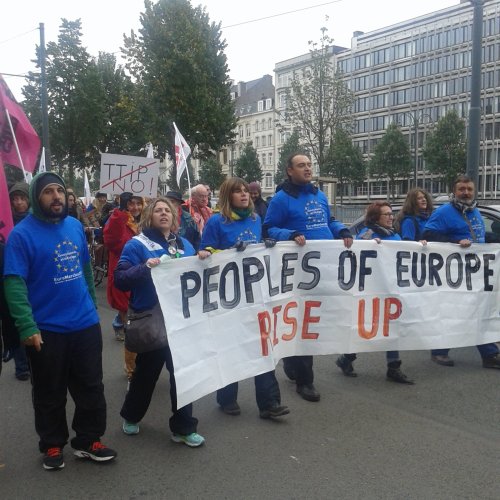BEUC | 1 December 2015
Lessons to learn from TPP: What the EU shouldn’t do in TTIP
by Léa Auffret
What is TPP?
TPP stands for the Trans-Pacific Partnership and it is the most important free trade agreement ever negotiated. It covers a vast number of sectors and involves 12 countries in the Pacific region, including the United States (US). Negotiations recently concluded after seven years of talks, but the text still needs to be legally reviewed, translated and ratified by the 12 countries. In the US, Congress will have to give its consent. While some stakeholders in the countries involved have welcomed the agreement, media reports and analysis by colleagues in the US suggests that public interest organisations are concerned by some of the provisions the agreement contains.
The direct influence of TPP on TTIP
Although TPP seems a remote issue, it could have a direct impact on EU consumers. Many of the provisions in TPP mirror US demands for the Transatlantic Trade and Investment Partnership (TTIP). What is more, eight TPP countries are currently negotiating a Trade in Services Agreement (TiSA) with the EU and other countries.
In addition, in cocropped-shutterstock_155055890.jpgncluding TPP, the US has not only managed to secure its interests in the Pacific region, but will also be able to influence the content of any future EU trade deals with Pacific countries. For instance, the EU is negotiating a free trade agreement with Japan, which is also a TPP and TiSA partner. The EU’s margin of manoeuvre in these negotiations has now been reduced as Japan is seeking to match the level of liberalisation included in TPP and is asking for similar concessions.
That is why we decided to have a closer look at TPP and try to anticipate what our trading partners’ are likely to demand in TTIP. Here are a few of the examples from TPP that the EU should definitely not replicate in TTIP:
1. Maintain high prices for medicines and restrict consumer access
This is an example of how trade agreements can have a direct influence on consumers’ lives. According to the head of the World Health Organisation, TPP “may adversely affect the market for generics [cheaper unbranded medicines similar to the branded medicines whose patents have expired] and biosimilars [biological medicines similar to other biological medicines that have already been authorised for use] and increase the cost of medicines.” It is crucial that the EU pays attention to these aspects in the TTIP negotiations because the terms of the deal could affect consumer access to medicines. Unlike TPP, TTIP should not lead to an extension of intellectual property rights or extend the exclusivities applied to medicines. In general, longer patent protection, or exclusivity, delay competition from generics and keeps medicine prices artificially high, at the expense of the healthcare system and, ultimately, the consumer and taxpayer.
2. Paving the way for delaying or watering down regulations
TPP contains chapters on ‘regulatory coherence’ and transparency which illustrate our concerns regarding the right to regulate in TTIP (and in TiSA).
Indeed, the intention in TPP is to make regulations between the trading partners more coherent, transparent and predictable by encouraging the partners to publish their proposed regulations and to allow other partners and interested persons to comment on them. This may sound harmless and even sensible but it risks undermining the ability of each country to regulate. If partners make extensive comments, there could be significant delays in the legislative process and governments may even be deterred from adopting regulations. The EU must take this risk into account in TTIP and TiSA as US negotiators want to include the same kind of rules in these deals. EU law must be decided by EU legislators.
In addition, the regulatory coherence chapter of TPP sets guidelines on carrying out impact assessments before proposing regulations. We know that the US is already demanding that this is included in TTIP and that other partners want to see this in TiSA. But consumer regulations and measures designed to meet public policy objectives could be affected by these types of requirements. For example, TTIP and TiSA could contain criteria (objective, necessary and not preventing trade flows) that trading partners must take into account when regulating at national level. The risk is that they could then question rules proposed in the EU, for instance on product safety, as contravening the criteria and creating a burden to trade.
3. The icing on the cake: including ISDS despite massive opposition
TPP contains an investor to state dispute settlement (ISDS) mechanism, despite the massive public outcry against this in most of the TPP countries. The only significant improvement that has been made in TPP, compared to ISDS provisions in previous US Free Trade Agreements, is a clear exemption for tobacco related health measures. Claims from foreign investors will not be admissible in such cases. Now that ISDS is set in stone in TPP, we wonder how the EU will persuade the US to replace ISDS with the recently proposed Investment Court System (ICS) in TTIP. TiSA on the other hand is not expected to include an investor to state dispute settlement mechanism.
We will be publishing more analysis about TPP. Let’s hope the elements of the TPP deal that have negative consequence for consumers will sound a wake-up call for the Commission.
The footnotes have not been included. See original article.



